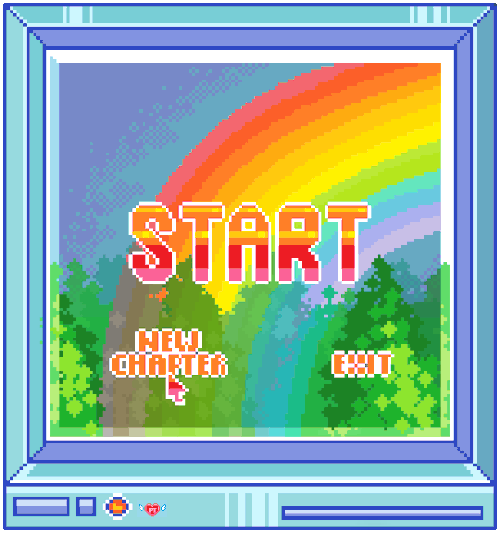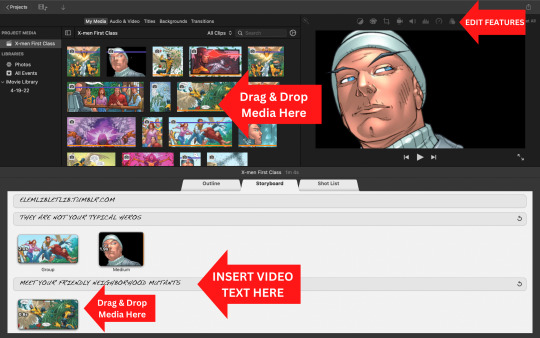#schoollibrarymedia
Explore tagged Tumblr posts
Text
Do you know the way? NO? You need a Pathfinder.

A pathfinder is a tool that explores a topic in extreme depth; moreover, the usefulness of a pathfinder is the culmination of resources about resources for the subject at hand. I created a pathfinder about skincare for a beginner entering the world of skincare for the first time.
My first mistake was that the subject I chose needed to be narrower. Skincare is a large topic that can be broken down into several smaller categories. When I started collecting resources for a skincare pathfinder, I was overwhelmed by the sheer amount of information available. That said, I narrowed my topic to cleansers in skincare, and I had a much easier time filtering through all of the information. Pathfinders need to contain relevant information that extends the reader only a short distance from the discussed subject.
The platform I used to design my Pathfinder was Thinglink, and I was satisfied. Thinglink is a resource that allows a still image or visual file of choice to be embedded with information using their software with visual anchors. The design felt very natural for the purposes of a pathfinder. I was very excited to play around with a 3D file called a glb file. This allowed me to upload a 3D model of a human, which I used to create my pathfinder. From there, I linked and embedded all my resources on the 3D model in such a way as to lead my viewer through my project. This interactive component of the pathfinder provided flexibility in how the resource was used.
The implications of the usefulness in a library setting are apparent. A resource that links information about a particular subject and then offers resources to interpret the information provided. However, designing a pathfinder was a challenging task! I came across too many occasions where I had to re-work how I wanted the information displayed and in what order to maintain the usefulness of the resource. In sum, if done correctly, pathfinders can be a great resource to help you teach when you are not there!
#LIS724#blogging#pathfinder#futureschoollibrarian#schoollibrarymedia#MLIS#Skincare#cleanser#thinglink
0 notes
Text
Screencasting to make the FINAL CUT!

School librarians have evolved and learned to be in two places simultaneously! Well, they wish... However, screencasting software has enabled it to leverage technology to record and produce video footage that can support distance learning or a flipped classroom learning style. This can be an effective tool for school librarians who need to be in two places at once and to support classroom curriculum with integrated library skills.
Initially, I decided to do some brief, informal research into what makes an excellent screencasting video, and I came across some great resources. The Techsmith Blog offered sound advice when creating a screencasting video:
Choose screen recording software
Prepare yourself and screen for recording
Record your screen
Make adjustments to your recording
Save and share your screencast
Following the advice from the blog, I decided to use awesomescreenshot.com software to record my video. I chose this software because it is user-friendly, familiar, and the free option for the software contains adequate tools to complete my how-to tutorial video.
I decided to record a brief how-to video on using two features of the advanced search option in Destiny Discover for an elementary school library. The ability to use the advanced search options in a library OPAC will empower students to find and access the information they need; moreover, a series of how-to Destiny Discover videos will benefit the unfamiliar library user when the school librarian is unavailable.
The process of creating the video tutorial required initial research, conceptualizing content, recording, and video editing. That said, the work required for a three-minute video tutorial is not represented within the time constraints of the video itself. It's a process. The Techsmith Blog also advises adding transitional elements and background music to elevate your production and provides a link to a great informational video on how to add these elements to your work.
youtube
With this in mind, after my recording had been accomplished, I used iMovie, an apple video editor, to import my recording. From there, I used iMovie to add background music which I obtained from the audio library on Youtube. The audio library on Youtube is convenient for virtual content creators and provides open-licensed music for video creation. Once satisfied, I added elements such as an introductory slide and transitions between slides to avoid jerky, misplaced video segments and promote a more natural watching experience.
This is my final product.
youtube
References
Audio library—YouTube Studio. (n.d.). Retrieved November 29, 2022, from https://studio.youtube.com/channel/UC-Smxhxtin1ERD3w5kchiSg/music
Camtasia (Director). (2020, October 2). How To Make Your Screencasts Look Better (and Easier To Edit). https://www.youtube.com/watch?v=EsIf7r6mAEc
Swanson, K. (2022, January 21). How to Make a Screencast in 5 Easy Steps. The TechSmith Blog. https://www.techsmith.com/blog/how-to-make-a-screencast/
#LIS724#screencasting#awesome screenshot chrome app#MLIS#blogging#videotutorial#video editing#schoollibrarymedia#school library#Youtube
0 notes
Text
Breakout, Breakout, Wherever you are! and meet gamification...

Gamification and game-based learning is the answer to engaging reluctant learners.
Designing a breakout-style activity encompassing several puzzle activities was an excellent way to introduce gamification and game-based learning instructional strategies. The school librarian group decided to use the Questioneers series by Andrea Beaty once again as our literary anchor for this project. Creating several connections to the same literature can create a relationship that can be used as a learning tool.
Google sites was a relatively straightforward application to create our breakout activity. I was glad for the experience because several school libraries use the application for their school library website, and I can see myself using the platform.
Collaboration with the school librarian group members was also not an obstacle. Our collaborative initiative started with a brainstorming process that led us to our familiar theme, and a democratic vote on the types of puzzles being completed finalized our plan. Google workspace creates a collaborative work environment that leaves project contributors free to work at their own pace and on their own time.
This is our end result:
This learning activity has so much promise inside and outside the library; moreover, this activity can be leveraged in a digital environment when in-person physical learning is impossible.
The puzzle-making process was a blast to explore! Creating your own work using digital tools is empowering and gives the librarian more decision-making power over their lesson. I used superteacherworksheets.com to generate the cryptogram I provided to the breakout room. I used the character Aaron Douglas Slater mentioned in the author's notes as the main character's inspiration as the critical component of the puzzle. The tricky part of the process was modifying it to the correct amount of characters for what you were designing. The design process was made easy by using automated technology; however, the technology has limitations; for example, the word renaissance would not fit onto one page correctly. that said, I had to reword my original puzzle.
In sum, gamification and game-based learning are strategies that school librarians can employ to engage reluctant learners. Effective learning can be achieved through gamified instruction and game-based activities and can be used in an interdisciplinary fashion. A school librarian with a collaborative mindset and gamification strategies can be a solid ally to a school's integrated curriculum.
#LIS724#gamification#game based learning#edtech#futurereadylibs#tlchat#schoollibrarymedia#schoollibrary#breakout
0 notes
Text
Fix, Flex, or Flunk? School Library Schedules Promote Student Dumping & 0 Inforamtion Literacy Skills

Libraries are the heart of the school and can function as an extension of the classroom. Library scheduling varies from school building to school building and from school district to school district. There are four core types of library scheduling:
Fixed
Flexible
Responsive
Hybrid
Here is an ignite presentation that will better explain the finer details of the different types of school library schedules.
*All photos used in the Ignite presentation are thanks to unsplash.com
As stated in the ignite presentation, the AASL supports responsive scheduling and offers in their Position Statement on School Library Scheduling that "Scheduling of classes should allow flexible, open, unrestricted, and equitable access on an as-needed basis to facilitate just-in-time research, training, and utilization of technology with instruction from the school librarian and the content-area educator. The practice of scheduling classes in the school library on a set schedule to provide educator release or preparation time inhibits best practice by limiting collaboration and co-teaching opportunities between the school librarian and classroom educator."
Too often, the library becomes a dumping ground for classroom teachers to drop off their students so they can glean a small amount of valuable plan time. The hope with responsive scheduling is that deeper connections to the curriculum can be made while at the same time supporting inquiry-based learning at the point of need (AASL, 2019).
AASL member Chiquita Toure, a public school librarian at Eastmoor Academy in Columbus, Ohio, offers insight into the current landscape of school libraries in her article My Transition from an Elementary to a High School Library. The article depicts the elementary school librarian as merely a purveyor of basic library skills that includes lessons on the Dewey Decimal System, safe exploration of the web, and the use of reference materials that aid in the functionality of learning (Toure, 2018). Toure also whistleblows about her experience that library sessions have evolved into a break/planning period for teachers and argues that this narrow-sighted focus on basic library skills is not the summation of what a certified school librarian is capable of given the correct support and resources (Toure, 2018). This inappropriate use of library sessions offers no benefit to the student or school community. It is in direct contrast to the aspirations and recommendations of the AASL's Stance on School Library Scheduling (Toure,2018). Toure notes that “school librarians can be agents for change if given the space, time, and resources” (Toure,2018).
The Information Literate Student: Embedding Information Literacy across Disciplines with Guided Inquiry by Jamie Gregory is insightful on techniques that can promote inquiry-based problem-solving by exploring multidisciplinary subject matter. However, these methods require schedule flexibility and staff/school buy-in. Gregory states that classroom teachers often assume that information literacy is subject solely to online searching strategies. This damages the student population's information literacy skills and frames the library and librarian as archaic, obsolete resources. Gregory states, “if students are to adopt an inquiry stance, they will need information literacy skills in each discipline throughout each stage of the inquiry process” (Gregory, 2018). These skills are more accessible in libraries that adopt responsive/flexible scheduling.
How do school librarians advocate for this change? The elusive elevator speech is a practical tool to have prepped in one's arsenal for advocacy. Here is a resource with 9+ templates that can be used to establish a tremendous professional elevator speech.
This is a professional and effective means to communicate needs on behalf of the library space; moreover, it will help facilitate smooth dialogue between decision-making stakeholders that can influence library operations.
Additionally, it is critical to understand three essential voices in implementing responsive/flexible scheduling in school libraries, and they are:
Principals-Partner & Supporter; implements concrete change
Teachers- Ally & Collaborator; implements lasting change
Librarians- Change drivers & collaborator; implements responsive/initial change
(McGregor, 2006)
In sum, the school librarian has the skills to positively influence students' information literacy skills and foster deeper curriculum connections through interdisciplinary and co-teaching models. Understanding and applying educational practices, especially those related to literacy and inquiry, are integral to school librarianship. This deep understanding and approach provided by school librarians will produce information-literate citizens who are prepared today and ready for tomorrow. They just have to have the schedule to do so.
*Additional resources
References
9+ Elevator Speech Examples. (n.d.). Retrieved November 10, 2022, from https://www.template.net/business/word-templates/elevator-speech-example/
AASL. (2022). Retrieved 07 November 2022, from https://www.ala.org/aasl/sites/ala.org.aasl/files/content/advocacy/statements/docs/AASL_Scheduling_Position_Statement.pdf
Gregory, J. (2018). The Information Literate Student: Embedding Information Literacy across Disciplines with Guided Inquiry. Teacher Librarian, 45(5), 27–34.
McGregor, J. (2006). Flexible Scheduling: Implementing an Innovation. 9, 34.
Toure, C. R. (2018). My Transition from an Elementary to a High School Library: Building a Better School Library Model. ERIC. Retrieved Nov 1, 2022, from https://eric.ed.gov/?id=EJ1195498
#LIS773#collaboration#schoollibrarymedia#schoollibrary#school librarian#AASL#tlchat#futurereadylibs#ignite#presentation#digitalresource
0 notes
Text
BOOM! BAM! POW! BOOK TRAILERS TO THE RESCUE!

Creating a book trailer was a complex process to begin. The problem was that I didn't know exactly where to start. Initially, I pondered several novels I had read as a young adult to create a book trailer; however, I decided to use a comic book! X-Men was the first choice for me because I am a childhood fan and because of several parallels that have been drawn between the X-Men universe and the civil rights movements in the United States. In the future, I would love to create a unit that uses Marvel's X-Men to navigate and explore what it means to be "other" in society. I created a book trailer highlighting X-Men: First Class Vol. 1.
youtube
First, I am an Apple user outside of work, so I decided to explore iMovie, and I can tell you that I was not disappointed. The layout and design of the iMovie software felt intuitive to use.

Additionally, I use extensions more often to complete design tasks. For example, remove.bg is a website that can remove image backgrounds, and I used the website to produce the isolated image of Professor X with a black background. Super helpful!
I selected several images from a digital copy of the comic that conveyed character meaning, identification, and action highlights to entice viewers. I took these images and inserted them into my digital storyboard. This process was not as easy as it sounds! It took several prototypes of the trailer before the image sequence matched the selected music's tempo. From there, it was just fine-tuning the video until everything flowed right. This will help promote books and reading materials to students and staff when a physical presence may not be possible.
The challenge was introducing the plot line and characters concisely in a memorable way without giving away the story. Or why read it right? A compelling book trailer uses minimal text, fast-moving images, and a sensible music selection. I hope you enjoyed the book trailer as much as I enjoyed making it.
*Hint Hint- I liked making it A LOT!
#LIS724#futureschoollibrarian#blogging#booktrailer#elementarylibrary#schoollibrarymedia#schoollibrary#digitalliteracy#imovie#x men first class#x-men#edtech#Youtube
0 notes
Text
Living the collaborative life through an interactive lesson <3
I want to start by saying that it was an enormous pleasure to work with Shelby, Madison, and Susie for our first action-packed semester lesson. We were grouped because we all have similar tracks at Dominican Univesity to become school librarians. Thus, we have been dubbed the school librarians group for LIS 724: Integrating Technology into Programming, Services, and Instruction. The content for the week revolved around media literacy, digital citizenship, and copyright. Our mission as a group, should we choose to accept it, was to create an interactive lesson about a topic in digital citizenship. Immediately, I thought of the 9 P's associated with digital citizenship and thought that passwords for kindergarteners were our group's destiny. I gave the group my elevator pitch, and 147 seconds later, we had google slides open, ready for our knowledge.
Peardeck was the easy choice for this mission. It pairs wonderfully with google slides. Like it was made for each other. No really. They were made for each other. With that, working with the others in my group was successful for the design thinking process of the lesson. It was necessary to go through and rework our lesson to be delivered with the proper communication that would be most effective for kindergarten only rather than kindergarten through second grade as initially planned. The levels of thinking are just too different, it was decided.
The virtual space our group collaborated in was treated with respect, patience, and grace. During the whole process, our group spent time exploring the technology with each other and designing a lesson that would be used to analyze passwords. Literacy is at the heart of librarianship, so we decided to connect a read-aloud with the content of the interactive lesson. Password, please? by Vahishta Mistry is an approachable children's story about a girl named Manju and her initial exploration of passwords and what they do.
Peardeck equipped us with sufficient tools to create an interactive lesson for a Kindergarten grade class to successfully interact with the technology presented and approach concepts of digital citizenship through an introduction to passwords. I am in love with this piece of tech genius. Also, shoutout to my team because we are the future school librarians!
Here is a link to a Youtube video that explains how to start using Peardeck!
#LIS724#collaboration#InteractiveLesson#DigitalCitizenship#DigitalLiteracy#Passwords#Kindergarten#Peardeck#edutech#elementaryschool#library#schoollibrarymedia#google slides
0 notes